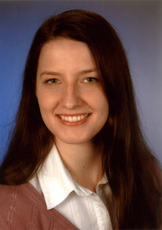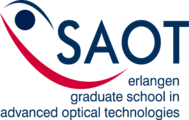
Dr.-Ing. Kerstin Müller
Alumnus of the Pattern Recognition Lab of the Friedrich-Alexander-Universität Erlangen-Nürnberg
K.Müller, C.Rohkohl, G.Lauritsch, J.Hornegger
The direct 3-D reconstruction of the heart chamber in the catheter lab provides many advantages. First, the clinical workflow is optimized due to the fact that the clinical information is directly available at the therapy system.
In this project, the focus of the 3-D reconstruction is on the left ventricle (LV). In general, the heart consists of four heart chambers, the left and right atrium and the left and right ventricle. The left part of the heart is separated of the right heart by the septum. The oxygenated blood from the lungs flows into the left atrium. From the atrium the blood flow continues through the mitral valve into the left ventricle. The outflow takes place trough the left ventricle outflow tract (LVOT) via the aortic valve and the aorta into the circulation.
From the clinical point of view, the ejection volume, the wall thickness and motion, the morphology of the mitral valve with the papillary muscles and the diameter of the LVOT is from major interest.
Regarding the long acquisition time of the C-arm system for the acquisition of the projection images (> 5s), the heart motion has to be considered. In the field of 3-D/4-D reconstruction of coronary arteries, an approach was developed estimating the heart motion from the projection images and compensating the motion in the reconstruction of the volumetric data. This technique is working on sparse data and cannot be applied to the heart chamber reconstruction.
In general, the project comprehends the development of new techniques for the 3-D/4-D reconstruction of non-sparse objects. With the focus based on the left ventricle, two groups of objects have to be analyzed: (1) Ventricle, (2) heart wall.
The project can be classified into three main working fields:
- Planning and analysis of a clinical acquisition protocol
- Development of a tomographic reconstruction approach
- Enhancement of the imaging results under the application of surface models





